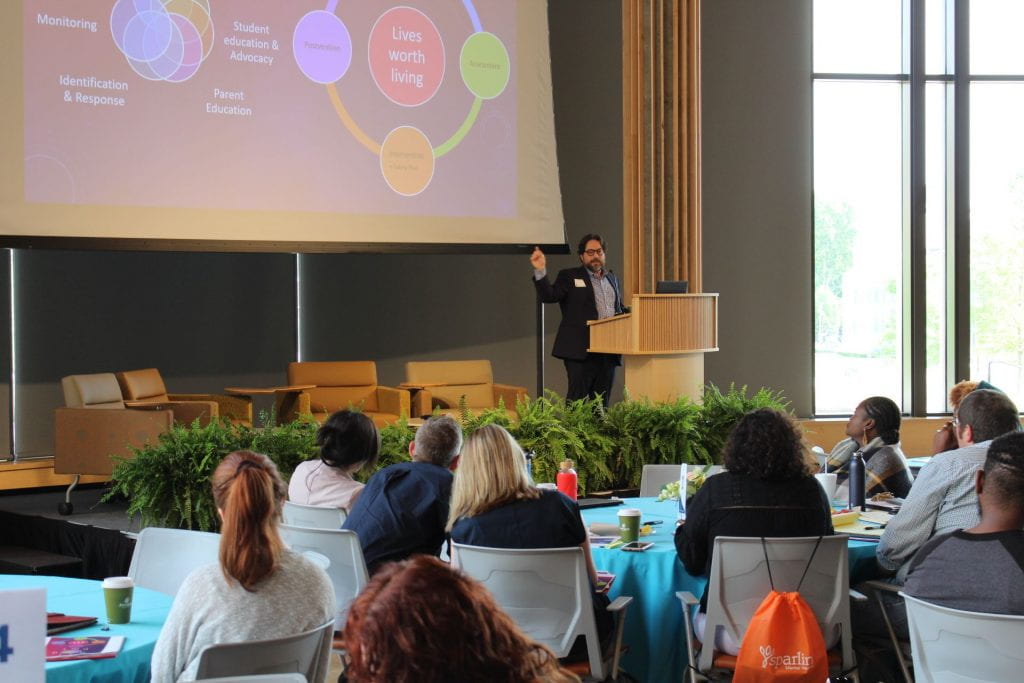
The inaugural Hope Policy Academy event took place June 6, 2019 at Washington University of St. Louis. The one-day conference aimed to support school stakeholders throughout the state of Missouri to implement suicide prevention, intervention, and postvention policies and practices.
Pursuant to Section 170.048, RsMO
- By July 1, 2018, each district shall adopt a policy for youth suicide awareness
and prevention, including plans for how the district will provide for the training
and education of its district employees. - Each district’s policy shall address, but not be limited to, the following:
(1) Strategies that can help identify students who are at possible risk of
suicide;
(2) Strategies and protocols for helping students at possible risk of suicide;
and
(3) Protocols for responding to a suicide death.
The Missouri Department of Elementary and Secondary Education (DESE) developed the “Youth Suicide Prevention and Awareness Model Policy” in accordance with Section 170.048, RsMO. The document outlines protocol and procedures for educating employees and students on the action and resources necessary to prevent suicide and promote student well-being.
The DESE model policy highlights the importance of the following components in school-based suicide prevention policies:
- Crisis response teams
- Crisis response procedures
- Procedures for parent involvement
- Community resources available to students, parents, patrons, and employees
- Responding to suicidal behavior or death by suicide in the school community
- Suicide prevention education for students
- Publication of policy
One highlight of the conference was a workshop on creating and working effectively in crisis intervention teams and using crisis intervention manuals to create school policies.
Materials from the workshop can be found here.
It is important to consider the cultural and ethnic variation at the individual level and within the school population when formulating school policies and protocols.
Various components of a student’s identity can intersect and affect their risk and protective factors for suicide, including:
- Multiracial identities
- Sexual orientation/gender identity
- Geographic characteristics: rural/urban/suburban
- Socioeconomic position
- Religiosity
- History of inequality, oppression, and discrimination